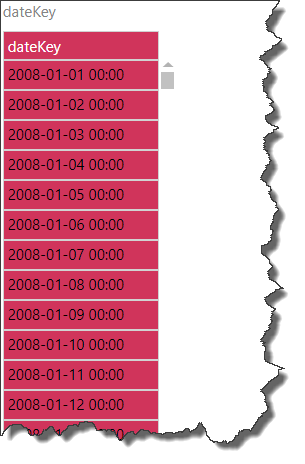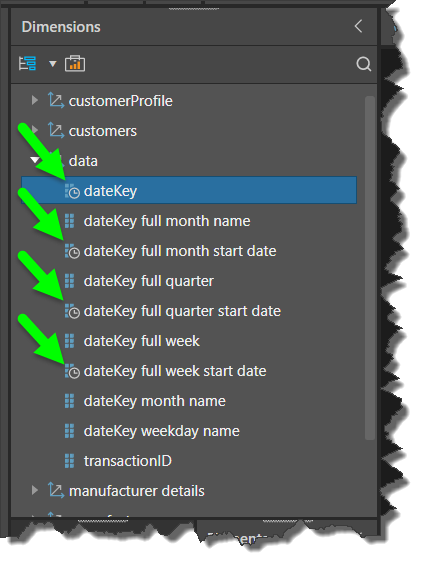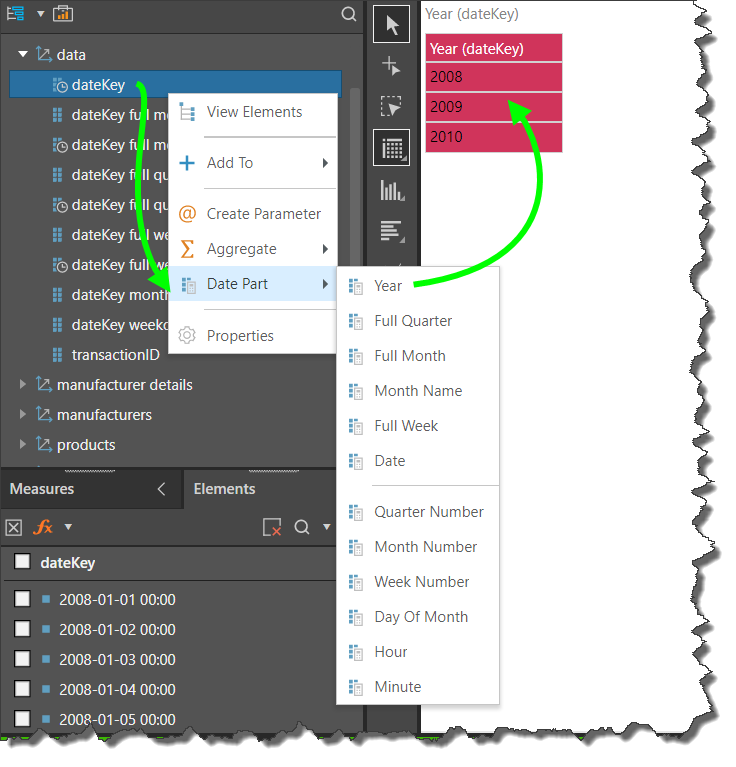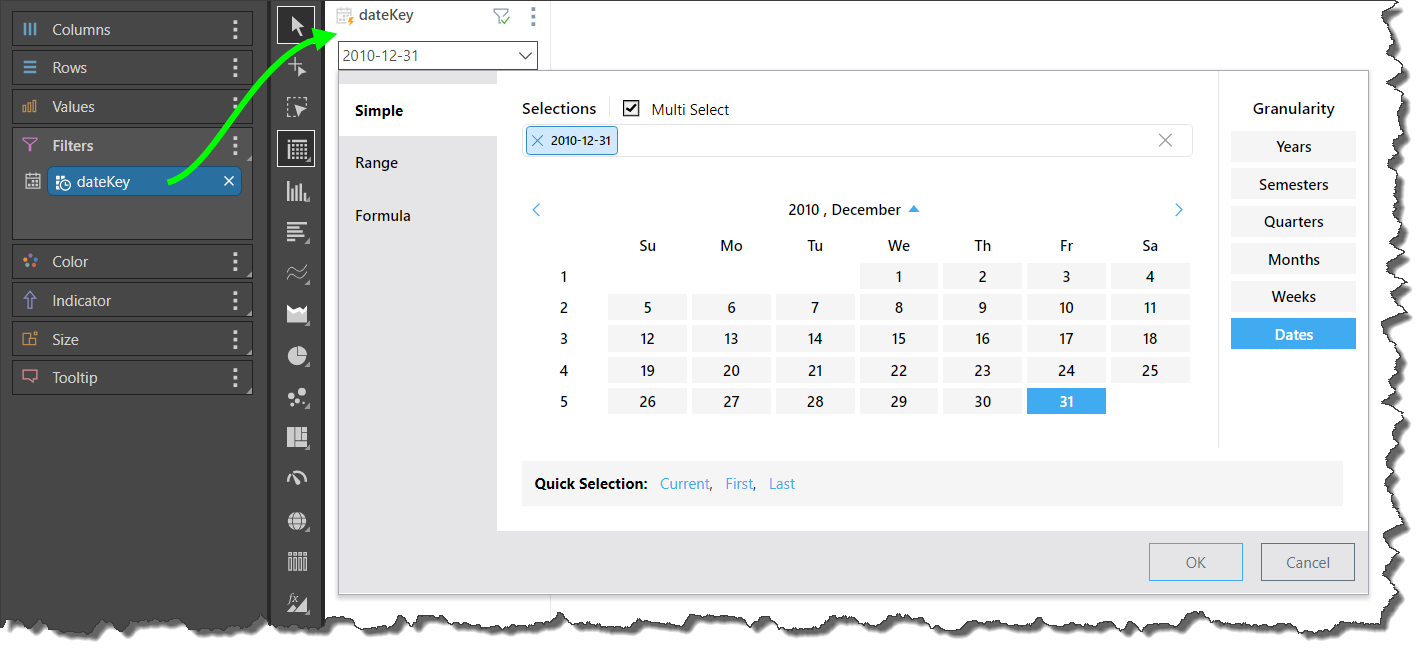Date-Time Hierarchies
Date-time hierarchies are hierarchies that contain date-time member elements. Commonly, the datasource will contain a date-time hierarchy that resembles that in the image below:

Date-Time Type
To utilize the various functions available for date-time hierarchies, you must ensure that the date-time hierarchy is assigned to the Date Time type from the Properties panel, or that it was categorized as Date Time in the Model app. Hierarchies that have been classified as date-time are designated by a clock icon in the hierarchy tree.

Date-Time Functions
If you are working with a data model that was configured in Pyramid, you may also see a number of ‘time intelligence’ hierarchies, which contain date groupings extracted from the date-time hierarchy. For instance, you may have a hierarchy for months, another for weeks, and another for years. This allows you to add relevant date-time groupings to the query to build visualizations that display, for instance, Sales by Quarter, filtered by Year.

Alternatively, you can extract date-parts from a given date-time hierarchy to create new date-time columns on the fly, without making changes to the date model. This allows you to, for instance, create a column listing all the years contained in the date-time column, a second containing all the months, a third containing all quarters, and so on. This offers a flexible method for performing date-time analysis in a data model that does not contain the required date-time groupings required for such analysis.

Another option allows you to add a date-time hierarchy to the Filter zone, thereby creating a Calendar Slicer, which is used to filter the query by the required date/ time groupings on the fly.

A fourth option enables you to create date-time calculations on the fly in the Time Calculation Wizard. This functionality allows you easily generate complex date/ time calculations, which can then be saved, shared, and added to the query.
